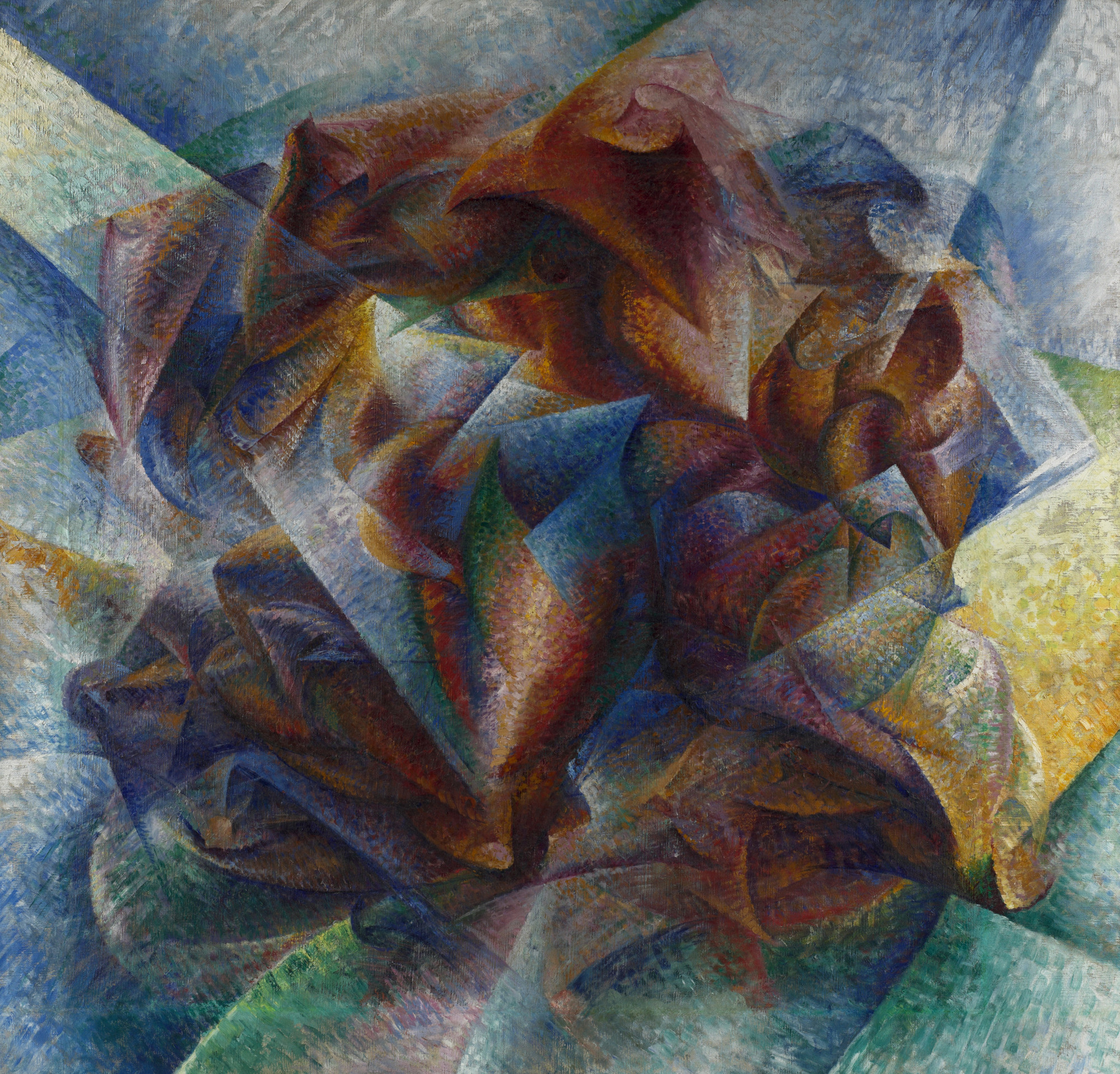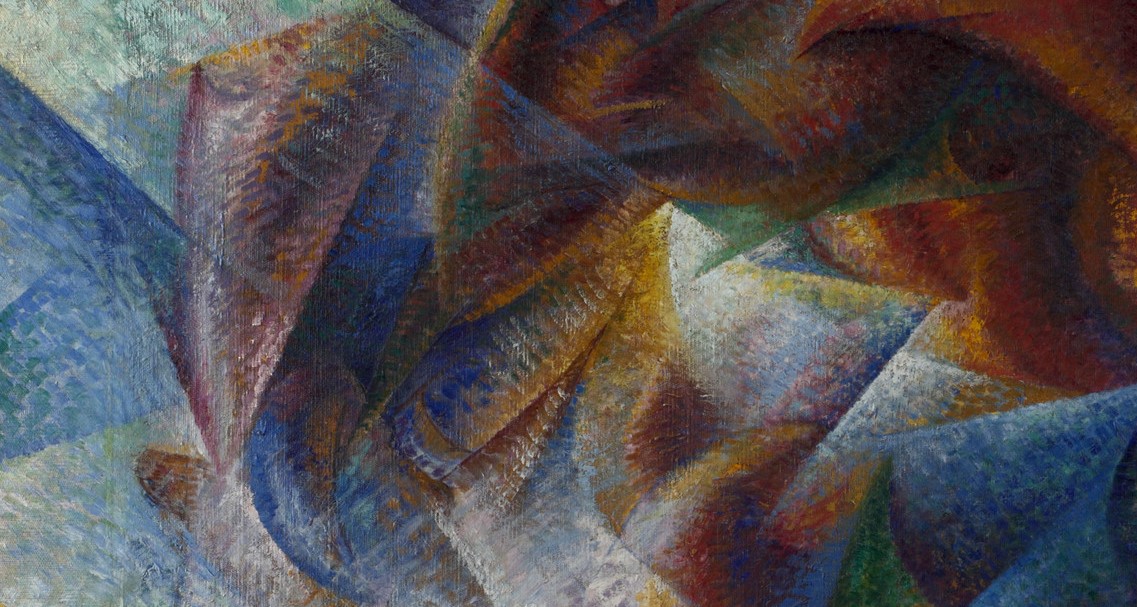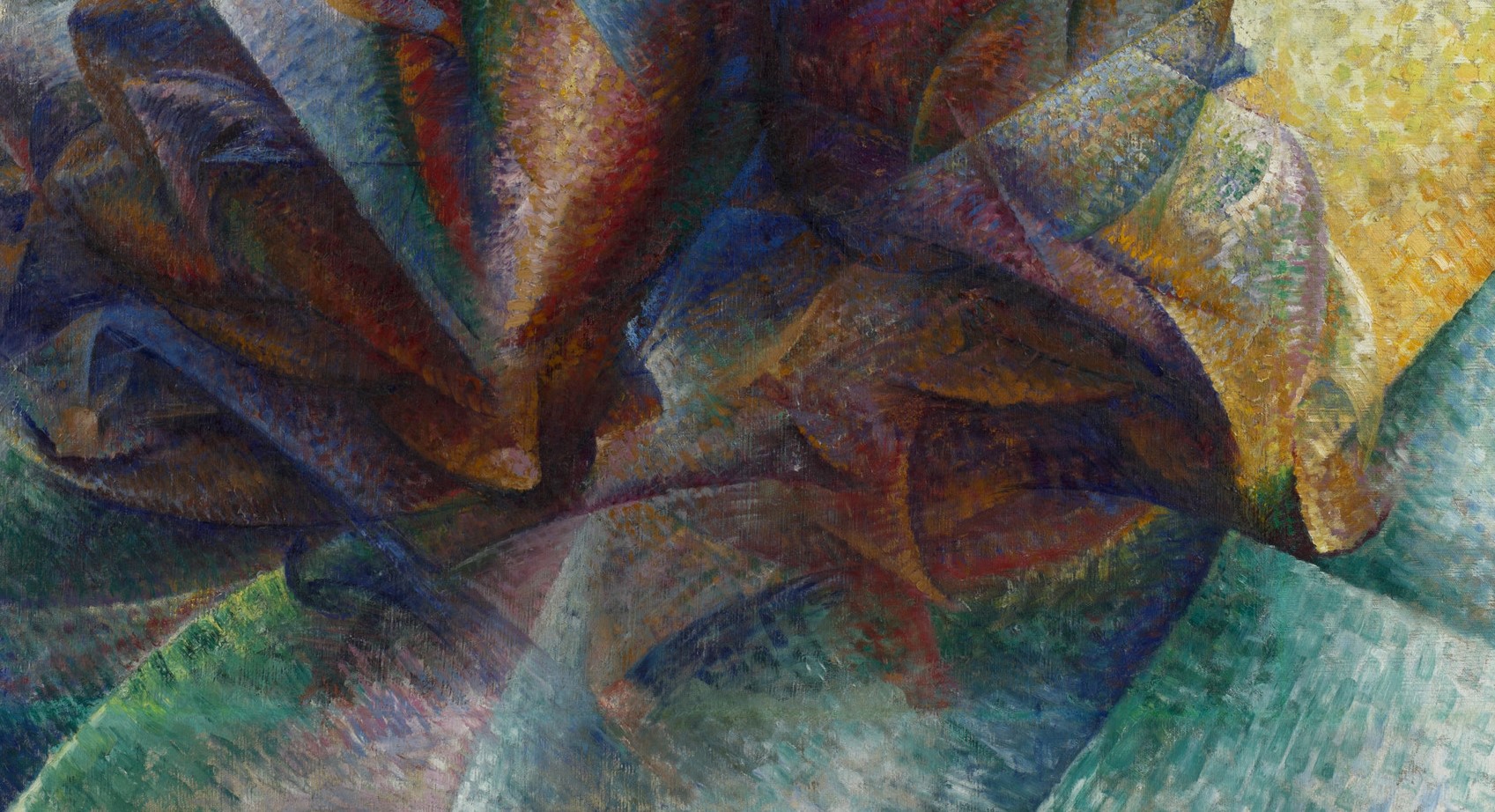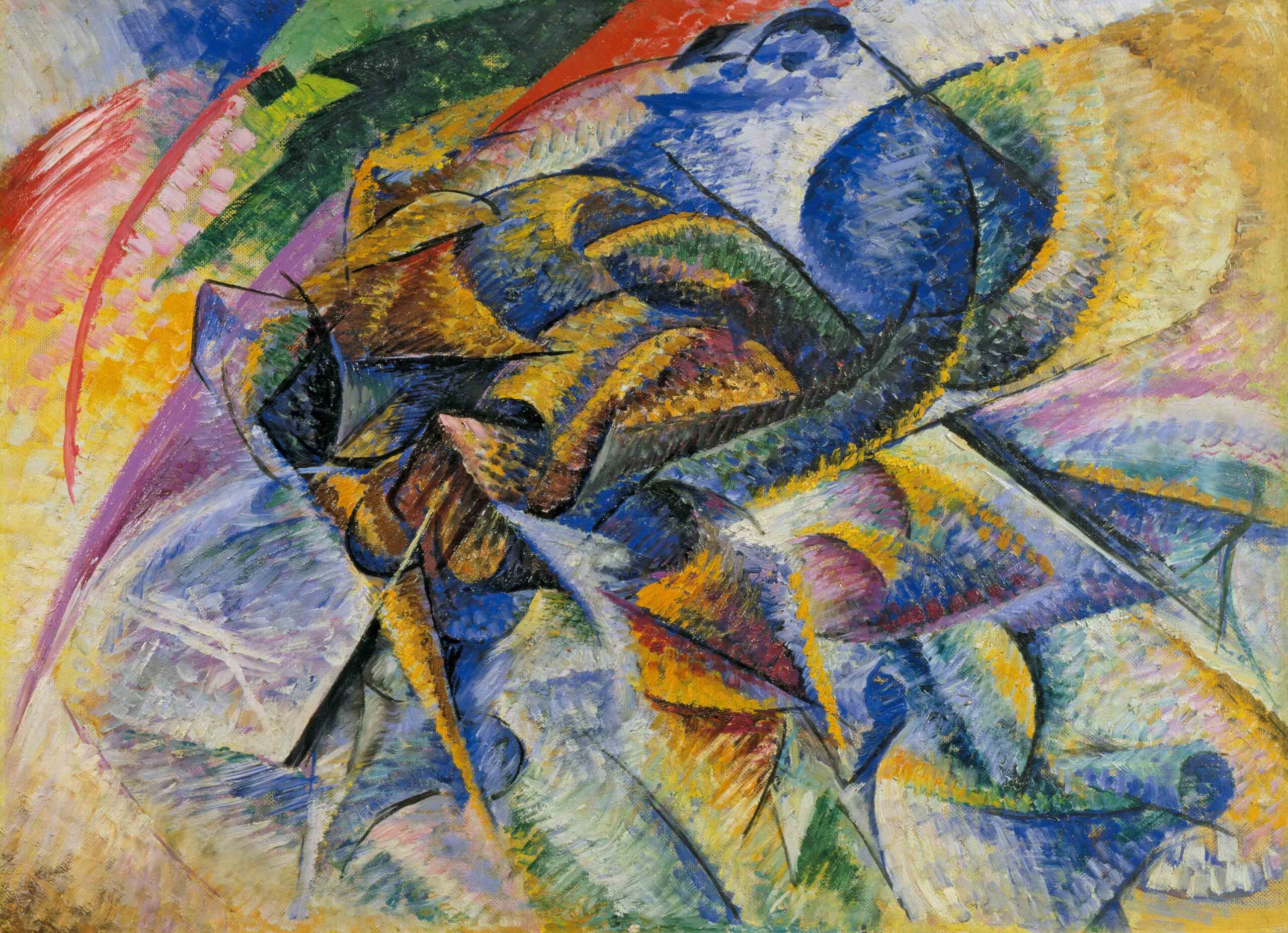Umberto Boccioni painted Dynamism of a Soccer Player in the oil on canvas technique, in 1913. This painting is part of the Collection of the Museum of Modern Art in New York.

What is Depicted in the Dynamism of a Soccer Player?
The painting Dynamism of a Soccer Player represents a male figure in motion in a highly geometrized form close to abstraction.
Dynamism of a Soccer Player – Analysis
In 1913, Boccioni created a series of paintings dealing with issues of dynamism, one of which is The Dynamism of a Soccer Player. In the Technical Manifesto of Futurist Painting, authored by Boccioni together with Carlo Carrà, Luigi Russolo, Giacomo Balla, and Gino Severini, it’s written Our growing need of truth is no longer satisfied with Form and Color as they have been understood hitherto. The gesture which we would reproduce on canvas shall no longer be a fixed moment in universal dynamism. It shall simply be the dynamic sensation itself. Indeed, all things move, all things run, and all things are rapidly changing. A profile is never motionless before our eyes, but it constantly appears and disappears. On account of the persistence of an image upon the retina, moving objects constantly multiply themselves; their form changes like rapid vibrations, in their mad career. Thus a running horse has not four legs, but twenty, and their movements are triangular. The painting The Dynamism of a Soccer Player aimed to represent the experience of movement, that is, the dynamism of movement through time and space. It shows how a figure or object would resolve itself if it followed the tendencies of its own forces during movement.

The phenomenon of dynamism is set as one of the crucial ones in the development of the philosophy of futurism. Movement and speed were considered the paradigm of modernity that the Futurists glorified. They sought inspiration from individual examples of athletes or dancers in motion to cars, industrial plants, and bustling city squares. Boccioni as an important theoretician of Futurism continued the ideas of the philosopher Henri Bergson. Bergson in his book An Introduction to Metaphysics from 1903 writes:
Consider, for example, the variability which is nearest to homogeneity, that of movement in space. Along the whole of this movement, we can imagine possible stoppages; these are what we call the positions of the moving body, or the points by which it passes. But with these positions, even with an infinite number of them, we shall never make a movement. They are not parts of the movement, they are so many snapshots of it; they are, one might say, only supposed stopping places. The moving body is never really in any of the points: the most we can say is that it passes through them. ut passage, which is movement, has nothing in common with the stoppage, which is immobility. A movement cannot be superposed on immobility, or it would then coincide with it, which would be a contradiction. The points are not in the movement, as parts, nor even beneath it, as positions occupied by the moving body. They are simply projected by us under the movement, as so many places where a moving body, which by hypothesis does not stop, would be if it were to stop. They are not, therefore, properly speaking, positions, but “suppositions,” aspects, or points of view of the mind. But how could we construct a thing with points of view?

This reality is mobility. Not things made, but things in the making, not self-maintaining states, but only changing states, exist. Rest is never more than apparent, or, rather, relative. The consciousness we have of our own self in its continual flux introduces us to the interior of reality, on the model of which we must represent other realities. All reality, therefore, is a tendency, if we agree to mean by tendency an incipient change of direction.
Masculine identity was highly represented in the futurist vision of the social changes that are being sought. Although numerous famous futurist works deal with themes and motifs related to female identity, masculine representation was significantly more prevalent. Based on these ideas, the painting Dynamism of a Soccer Player is created, depicting exactly that active, potent, irrepressible male energy. The cult of youth and sport was part of a futurist philosophy and the principles of masculinity belong to the same value framework. Youth, mobility, energy, and inventiveness in futurist ideas had to overcome age, static, sluggishness, and tradition in Italian society.
Boccioni approaches the motif of an athlete in motion using cubist techniques of mobile perspective and fragmented scenes. The structure of the composition is such that clear recognition of the represented male figure is impossible. Indications of a bent leg or a swing of the arm persist in the form of discrete associative forms. Here, Boccioni aimed to unite the experience of transformation that a football player goes through, as well as the transformation of the space that surrounds him, through intense geometrization. In this work, the divisionist technique is an important element. An all-encompassing atmosphere of transformation is fueled by the divisionist vibrancy of complementary colors. Green tones characterize the dynamically curved lower surface of the composition. Blue and white dominate the upper segments of the image structured so that in the form of beams of light fall diagonally on the centrally positioned figure. The figure of the football player is represented by dominantly warm tones of yellow, orange, and red.

Related Artworks
The Dynamism of a Soccer Player is part of a series of paintings in which Boccini examines the dynamism of movement. The paintings Dynamism of a Cyclist and Dynamism of a Human Body are part of the same series that was created mainly in 1913.
